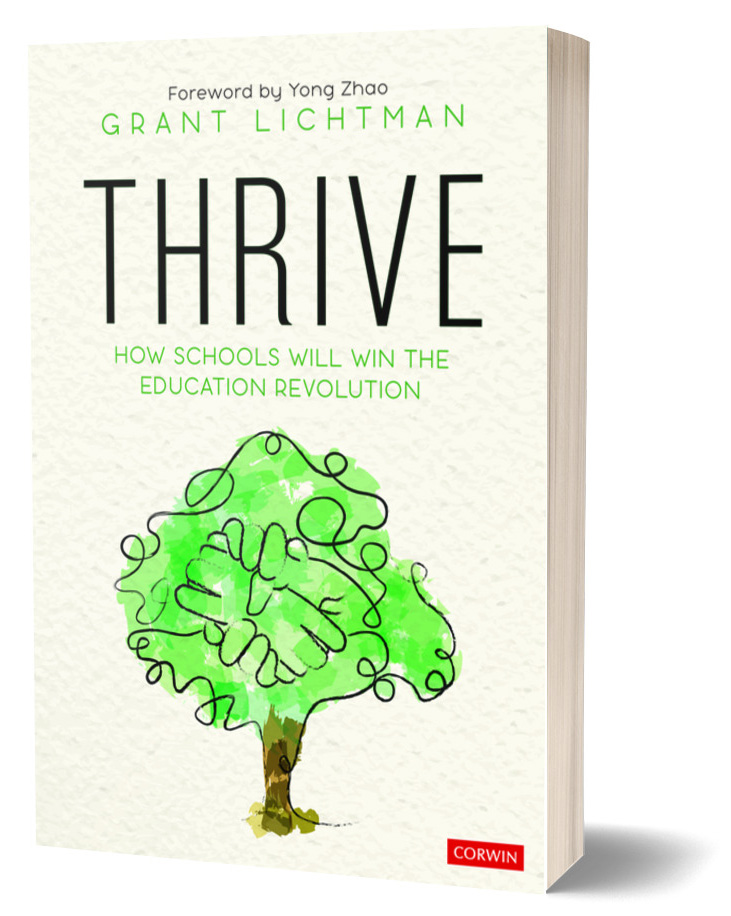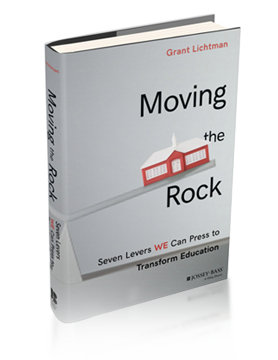 If you are trying to change your school, this is where your efforts will be most rewarded. In Part II, we again visit the work of systems guru Donella Meadows who identifies ” ‘leverage points’ within a complex system (a corporation, an economy, a living body, a city, an ecosystem) where a small shift in one thing can produce big changes in everything.” In Part I, I covered her Bottom Six, or less impactful leverage points; in this post I translate the Top Six.
If you are trying to change your school, this is where your efforts will be most rewarded. In Part II, we again visit the work of systems guru Donella Meadows who identifies ” ‘leverage points’ within a complex system (a corporation, an economy, a living body, a city, an ecosystem) where a small shift in one thing can produce big changes in everything.” In Part I, I covered her Bottom Six, or less impactful leverage points; in this post I translate the Top Six.
The Top Six
6. The structure of information flows (who does and does not have access to information). If you have not already read Stanley McChrystal’s Team of Teams, do; IMHO it is the most important guidebook of the last decade for managers and leaders. Meadows makes the same argument, though with a more “crowd-sourced” feel. It’s simple: people are much more likely to change practice when they are in the information loop than when they are merely told what to do. In schools, this does not mean more emails and newsletters. It means inviting diverse groups of stakeholders into the room, literally and physically. Break information silos and you will find disruptive creativity leaking into the cracks.
5. The rules of the system (such as incentives, punishments, constraints). I have been advocating for more than a decade that we need to change the school “operating system” if we want to generate different outcomes. You can think of an operating system as the code that sets the “rules” for a computer, and the same goes for schools. The “rules” of a school include curriculum, pedagogy, student assessment, faculty evaluation, and the uses of time and space. If you want to change your school in substantive ways, you have to change these rules, and not just a new textbook here and an expansion of block periods there. By definition systems are integrated: if you want to make real change, you change the rules that govern the system. That is where REAL impact will take place. Are these changes hard? We all reinvented the operating system almost overnight in the spring of 2020, so we know we can if we want to.
4. The power to add, change, evolve, or self-organize system structure. Meadows tells us that,
“The most stunning thing living systems and some social systems can do is to change themselves utterly by creating whole new structures and behaviors. In biological systems that power is called evolution. In human economies it’s called technical advance or social revolution. In systems lingo it’s called self-organization.”
In human organizations, the ability to evolve is rooted in a culture of learning that empowers, stimulates, and rewards creativity, risk-taking, experimentation, and iteration. This culture creates structures that break silos and expect collaboration. It gives resources to those who exhibit a growth mindset and reduces resources to those who refuse to grow. Think of your school as a natural ecosystem and this makes enormous sense.
3. The goals of the system. I and others have repeated the importance of having a system-wide North Star. Change leaders advise know it is critical that all people in the organization understand and align their work towards the “why”. It is the starting point of any change: knowing and agreeing on where you are headed, even as we know that the path won’t be direct or linear. As I described in detail in Thrive, in our current era of a rapidly differentiating marketplace for education, it is critical to set goals that find the overlapping sweet spot amongst required standards, education best practices, and customer demands. With a firm North Star, changes will be supportive, aligned, and symbiotic. Without one, change will be rudderless,
2. The mindset or paradigm out of which the system — its goals, structure, rules, delays, parameters — arises. Paradigms drive our society. Meadows reminds us that they are,
“The shared idea in the minds of society, the great big unstated assumptions — unstated because unnecessary to state; everyone already knows them — constitute that society’s paradigm, or deepest set of beliefs about how the world works.”
For 150 years, the paradigm for education has been rooted in efficiency; preparing cogs to fit into a predictable socio-economic system; teaching to a set of fixed standards designed to support Industrial Age needs. The system of education has been rooted in “what we teach”, not in what students need to learn to succeed in a largely post-Industrial world, or how they will learn it best.
I have recently argued that we need a fundamental paradigm shift to prepare our students for a world that is increasingly VUCA (volatile, uncertain, complex, and ambiguous):
“The realities of VUCA that are driving the human condition require that education helps prepare our students with finding and understanding both meaning and purpose. Or in shorthand,
VUCA rt M+P.”
Without a paradigm shift, real change won’t happen because we are still systemically oriented to an outdated uber-concept of the “why” of school. I believe that many, if not most education stakeholders, including parents, want our schools to focus on this combination of meaning and purpose, and to finally relegate the efficiency-based model of the Industrial Age to the dustbin of history.
1. The power to transcend paradigms. As if shifting paradigms is not daunting enough, Meadows asks that we remember that there is one lever even more powerful, and for schools this could not be more important. It is the fact, not opinion, that even the major paradigm shift of today will not be valid at some point in the future. We simply cannot become locked into new realities, to “unfreeze” from the past, move to a new system, only to “refreeze” in a paradigm that may be obsolete in the near future. Meadows leaves us with the top of the top levers:
“It is in this space of mastery over paradigms that people throw off addictions, live in constant joy, bring down empires, get locked up or burned at the stake or crucified or shot, and have impacts that last for millennia.”
So that’s it. The Bottom Six levers of change that may not help us as much as we want, and the Top Six levers that will have the most impact, even as they sound big, daunting, or scary. Change brings about uncertainty, but not changing may well bring about extinction.











Leave A Comment